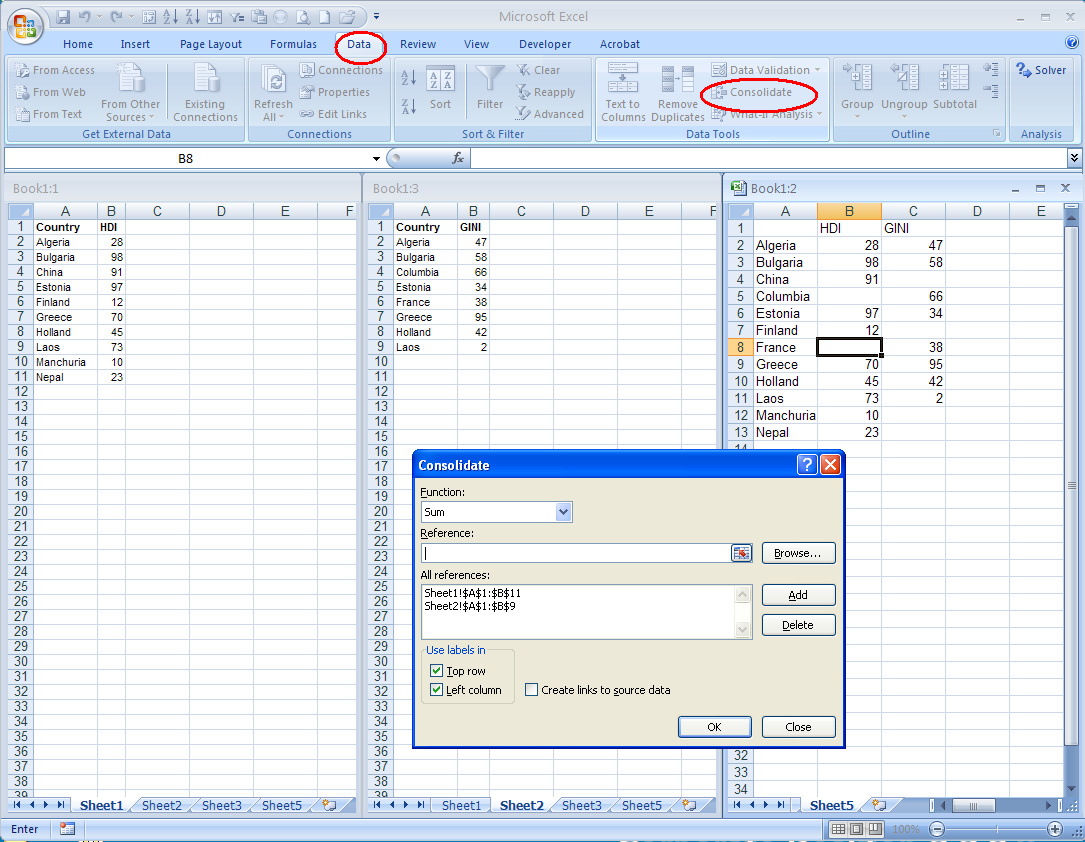5 Ways to Merge Data from Two Excel Sheets

If you're working with data in Microsoft Excel, you might often find yourself needing to merge information from two or more sheets. Whether it's for consolidating financial reports, combining customer data, or simply updating datasets, merging Excel sheets efficiently can save you a significant amount of time and reduce the likelihood of errors. In this post, we'll explore five practical methods to merge data from two Excel sheets, ensuring your workflow remains seamless and accurate.
1. Using VLOOKUP to Merge Data

The VLOOKUP function is a staple in Excel for combining data from different sheets. Here’s how to use it:
- Identify Key Columns: Choose a unique identifier in both sheets that you will use to match records.
- Prepare Your Sheets: Ensure your data is clean, with no duplicate keys in the lookup column.
- Write the VLOOKUP Formula:
=VLOOKUP(Lookup_value, Table_array, Col_index_num, [Range_lookup])
Where:- Lookup_value is the value you want to search for in the first column of the second sheet.
- Table_array is the range that includes the lookup column and all the columns you want to pull data from.
- Col_index_num is the column number in the Table_array from which to return the value.
- Range_lookup is TRUE for an approximate match or FALSE for an exact match.
🔍 Note: If the lookup column in your source table isn't the first column, VLOOKUP won't work. Consider using INDEX and MATCH as an alternative.
2. Power Query for Data Integration

Power Query, a data transformation and preparation tool within Excel, offers a robust way to merge sheets:
- Access Power Query: Go to the Data tab, click on Get Data, and choose From Other Sources > Blank Query.
- Load the Sheets: You'll need to load both Excel sheets into Power Query.
- Merge Queries:
- Select the first query and click on Home > Merge Queries.
- Choose the second query and a key column to merge on.
- Customize the Merge: Decide on the type of join (e.g., Inner, Left Outer).
- Expand Data: After merging, expand the new columns to display the integrated data.
3. INDEX and MATCH Combo

For more flexibility than VLOOKUP offers, you can use INDEX and MATCH functions together:
- Structure Your Formula:
=INDEX([return range], MATCH(lookup_value, [lookup range], [match type]))
- Return range is where the data you want to retrieve resides.
- Lookup_value is what you're looking up in the lookup column.
- Lookup range is where your key column for matching exists.
- Match type is usually set to 0 for an exact match.
- Apply the Formula: Drag the formula across rows to fetch corresponding data from the second sheet.
4. Power Pivot for Advanced Merging

Power Pivot is part of Excel for Microsoft 365 that enhances its data modeling capabilities:
- Add Data to Power Pivot: From the Power Pivot tab, select Add to Data Model to bring your sheets into the Power Pivot window.
- Create Relationships: Use the Manage Relationships function to link sheets by common columns.
- Use DAX Formulas: Create measures and calculated columns to manipulate and merge data as needed.
💡 Note: Power Pivot and Power Query are powerful but can be complex. Ensure you understand their basics before attempting large-scale data operations.
5. Manual Copy and Paste with Paste Special

Sometimes, the simplest methods work best:
- Select Data: Highlight the data range from the first sheet.
- Copy: Use Ctrl + C to copy the selected data.
- Activate Paste Special: Go to the destination sheet, right-click, and choose Paste Special.
- Paste Values: Select Values or Formulas to merge data without bringing over cell formats or links.
Merging data in Excel doesn't have to be daunting. Each of these methods offers unique advantages, and choosing the right one depends on your specific needs and the complexity of your data. For quick merges where formatting isn't critical, manual copy-paste might suffice. For more complex or repetitive data merging tasks, consider using Power Query or Power Pivot to automate and streamline your process.
What’s the difference between VLOOKUP and INDEX MATCH for merging data?

+
VLOOKUP can only look up values to the right of the lookup column, whereas INDEX and MATCH can return values from any column in the table array, providing greater flexibility.
Can I use Power Query to merge data if I don’t have Excel for Microsoft 365?

+
Power Query is available in Excel 2013 and later versions. If your version doesn’t support Power Query, consider upgrading or using an alternative like VLOOKUP or INDEX MATCH.
How do I update merged data when the source sheets change?

+
For manual methods like VLOOKUP or INDEX MATCH, you’ll need to refresh formulas. With Power Query or Power Pivot, data will automatically update if the connection to the source files is maintained.
Can I merge sheets that have different structures or column names?

+
Power Query provides options to transform data before or during merging, allowing you to rename columns, reorder, and even conditionally merge data based on different structures.



